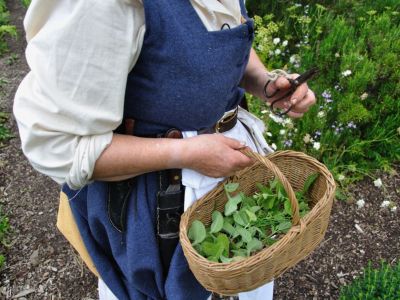Shaker Herb Garden Info
The early Shakers relied primarily on faith healing and the laying on of hands to treat medical ailments. A doctor was called upon only for the most severe injuries or illnesses. Instead, Shakers focused on prevention by living a life of regular routine comprised of work, exercise and rest, three meals per day and little to any use of alcohol or tobacco. When all else failed, the Shakers looked to the gardens they planted and indigenous plants. All well and good, but what exactly is a Shaker herb garden?
What is a Shaker Herb Garden?
For the Shakers, gardening was a spiritual task; a way of creating heaven on earth utilizing their belief system. Some of these basic tenets include “keep learning”, “nurture the soil”, “know your plants”, “work faithfully” and “care for your tools.” The Shakers kept annual records noting such timings as when birds arrived in the Spring, when certain trees and shrubs leafed out, and other natural observations that served as a gauge of outdoor temperatures suitable for planting. The Shakers believed a garden was “an index of the owner’s mind”. This meant that herbs in a Shaker garden were planted in neat, tidy rows in square beds usually delineated by a low stone enclosure, picket fence or brick edging. Equally important was keeping the herbs in a Shaker garden weeded. Weeding was considered a spiritual cleansing as akin to the cultivation of a garden as to the cultivation of the mind. Removing weeds was like removing impure thoughts and following the tenet “cleanliness is next to godliness.”
Herbs in a Shaker Garden
Shaker gardens were comprised of a variety of vegetables and plenty of herbs. The herbs Shakers grew however, were rarely used in food with the exception of thyme, sweet marjoram, savory, sage and parsley. They began selling surpluses of the above herbs along with medicinal Shaker herbs like bee balm, sweet basil, lavender, hyssop, fennel, dill, coriander, lemon balm, pot marigold, rosemary, and more. By 1820 and through into the next century, herbs grown by Shakers were sold dried and as herbal extracts, oil, and patent medicines. At the peak of the business in 1850 the New Lebanon, New York community was producing 100,000 pounds of dried herbs and several thousand pounds of extracts each year. The 1851 catalogue lists 356 medicinal herbs, 4 common culinary herbs, 181 fluid extracts and more. At one time there were around 17,000 Shakers across several states. Today there are only seven Shakers in a tiny community of Sabbathday Lake, Maine. Despite their reduced numbers, the Shakers continue to garden much as they did 150 years ago and you can too by instituting the above Shaker herb garden info into your own landscape and growing the herbs Shakers grew.
